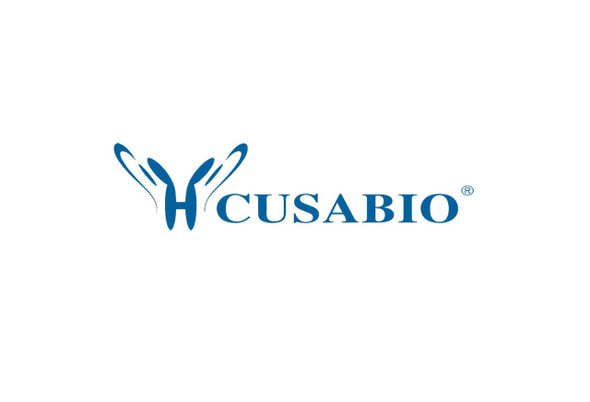Cusabio Active Proteins
Recombinant Human Interleukin-33 protein (IL33) (Active) | CSB-AP001911HU
- SKU:
- CSB-AP001911HU
- Availability:
- 5 to 10 Working Days
Description
Recombinant Human Interleukin-33 protein (IL33) (Active) | CSB-AP001911HU | Cusabio
Protein Description: Partial
Alternative Name (s) : IL-33, IL-1F11, Nuclear factor from high endothelial venules, NF-HEV,
Gene Names: IL33,C9orf26,IL1F11,NFHEV
Research Areas: Immunology
Species: Homo sapiens (Human)
Source: E.Coli
Tag Info: Tag-Free
Expression Region: 112-270aa
Sequence Info: SITGISPIT EYLASLSTYN DQSITFALED ESYEIYVEDL KKDEKKDKVLLSYYESQHPS NE SGDGVDGK MLMVTLSPTK DFWLHANNKE HSVELHKCEKPLPDQAFFVL HNMHSNCVSF ECKTDPGVFI GVKDNHLALI KVDSSENLCT ENILFKLSET
Biological Activity: Fully biologically active when compared to standard. The ED50 as determined by a cell proliferation assay using murine D10S cells is less than 0.05 ng/ml, corresponding to a specific activity of > 2.0 × 107 IU/mg.
MW: 17.9 kDa
Purity: >97% as determined by SDS-PAGE and HPLC.
Endotoxin: Less than 1.0 EU/µg as determined by LAL method.
Relevance: Cytokine that binds to and signals through the IL1RL1/ST2 receptor which in turn activates NF-kappa-B and MAPK signaling pathways in target cells (PubMed:16286016) . Involved in the maturation of Th2 cells inducing the secretion of T-helper type 2-associated cytokines. Also involved in activation of mast cells, basophils, eosinophils and natural killer cells. Acts as a chemoattractant for Th2 cells, and may function as an "alarmin", that amplifies immune responses during tissue injury (PubMed:17853410, PubMed:18836528) . {ECO:0000269|PubMed:16286016, ECO:0000269|PubMed:17853410, ECO:0000269|PubMed:18836528}.; In quiescent endothelia the uncleaved form is constitutively and abundantly expressed, and acts as a chromatin-associated nuclear factor with transcriptional repressor properties, it may sequester nuclear NF-kappaB/RELA, lowering expression of its targets (PubMed:21734074) . This form is rapidely lost upon angiogenic or proinflammatory activation (PubMed:18787100) . {ECO:0000269|PubMed:18787100, ECO:0000269|PubMed:21734074}.
PubMed ID: 12819012; 10566975; 16286016; 21454686; 14702039; 15164053; 15489334; 22307629; 17853410; 17185418; 18787100; 18836528; 19596270; 19559631; 19465481; 19439663; 21734074; 22215666; 19836339; 23980170
Notes: Repeated freezing and thawing is not recommended. Store working aliquots at 4℃ for up to one week.
Function: Cytokine that binds to and signals through the IL1RL1/ST2 receptor which in turn activates NF-kappa-B and MAPK signaling pathways in target cells
Involvement in disease:
Subcellular Location: Nucleus, Chromosome, Cytoplasmic vesicle, secretory vesicle, Secreted
Protein Families: IL-1 family
Tissue Specificity: Expressed at high level in high endothelial venules found in tonsils, Peyer patches and mesenteric lymph nodes. Almost undetectable in placenta.
Paythway: Necroptosis
Form: Lyophilized powder
Buffer: Lyophilized from a 0.2μm filtered 20 mM PB, 150 mM NaCl, 1mM EDTA, pH7.4
Reconstitution: We recommend that this vial be briefly centrifuged prior to opening to bring the contents to the bottom. Please reconstitute protein in deionized sterile water to a concentration of 0.1-1.0 mg/mL.We recommend to add 5-50% of glycerol (final concentration) and aliquot for long-term storage at -20℃/-80℃. Our default final concentration of glycerol is 50%. Customers could use it as reference.
Uniprot ID: O95760
Uniprot Entry Name: IL33_HUMAN
HGNC Database Link: HGNC
UniGene Database Link: UniGene
KEGG Database Link: KEGG
STRING Database Link: STRING
OMIM Database Link: OMIM









